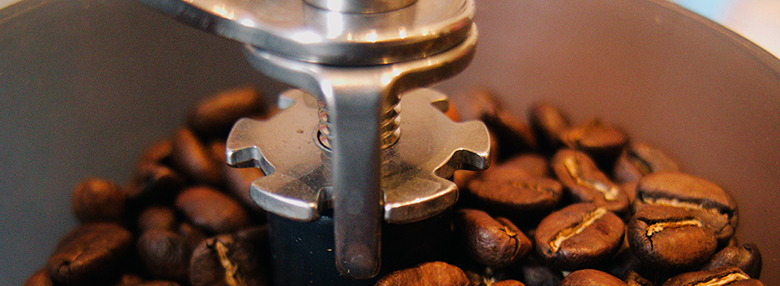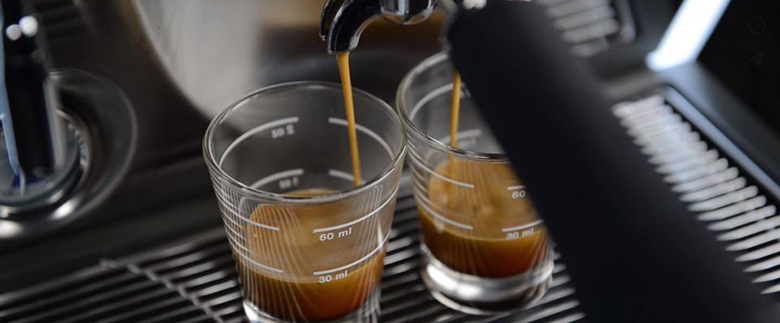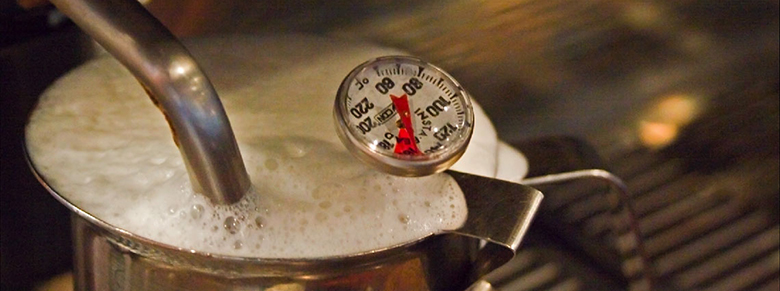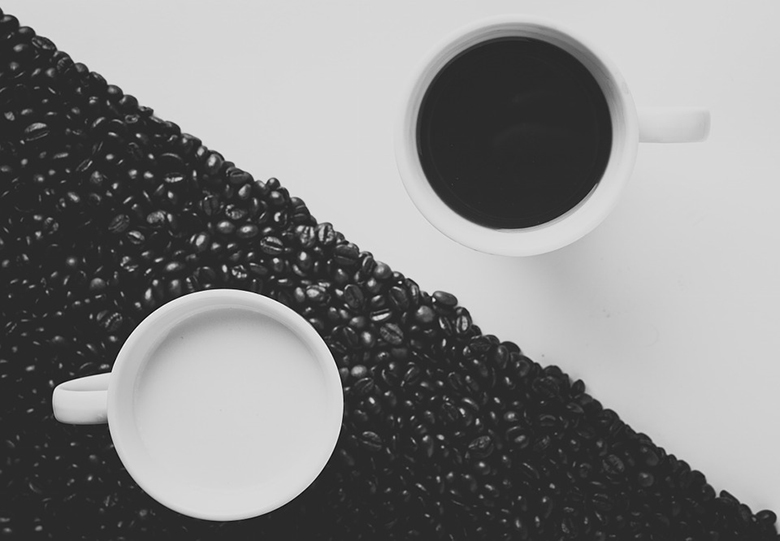5 things I learned after Barista training

‘Wake up and smell the coffee’ goes the old phrase, and having only just joined the team at Caffe Society, and arriving for my first day, this is what I was faced with the very next day.
Full-blown Barista training.
First we have to rewind a portion. I am a coffee drinker. But I tend not to drink more than two cups a day due to the caffeine giving me the shakes (literally).
So when I was told I was being enrolled on a half-day training course within the main training/showroom here at Caffe Society headquarters on the outskirts of Leeds. Not only was I excited, my stomach was nervous…
Having had some time to process the experience, and a little while to attempt to practice my newly obtained ‘skills’ – incredibly subjective – I have come to a few conclusions…
1. An integral part of any coffee is the grinder

Finding the perfect grind setting for your coffee is also a task in itself
I was always under the impression that the beans were the be-all and end-all underpinning a great cup of coffee.
But as it turns out, the grinder is just as important, spend all you want on the best quality beans in the world, but if you grind them too fine or not enough you will get seriously different quality cups.
After a few demonstrations on the merit of this, I can confirm that it is vital that you learn to get to grips with your grinder to get the most from your beans.
The fineness of the grind produced will have huge effects the flavour of your brew since optimal brew flavor depends on even extraction of the coffee.
Larger particles will be under-extracted, giving you a thin, weak brew. Whereas too-fine a power will be over-extracted, leaving you with an inherently more bitter tasting coffee.
Therefore it can take a little fine tuning to get your grind just right, so getting that even grind ensures even flavour extraction, meaning you’ll finally be able to taste all the subtle hints and flavour nuances you’ve been missing in your carefully roasted coffee.
2. Espresso is the base of all coffee

From a Latte to an Americano, the base of a good coffee will always start with an espresso.
This might seem like a silly comment to most coffee aficionados out there, but I was thoroughly unaware that ALL good coffee starts with an espresso base.
After some coffee history from Master Barista and resident Italian, Domenico, we learned that the milky coffee and many of the most common phrases associated with coffee in the English speaking nations, were invented by the big coffee conglomerates.
Still doesn’t stop me asking for a Grande…
3. Milk frothing is hard

Control is key to getting the perfectly frothed or steamed milk.
Having (probably shockingly) found out that all coffee stems from an espresso base, the importance of milk frothing was then clear.
What wasn’t, was the difficulty in getting consistently well frothed milk!
It turns out, that it’s incredibly hard to get a good froth without a) burning the milk or b) getting any foam.
Another surprising aspect of learning to froth milk was how bloody hot the steam pipe and milk jug were. If you have sensitive hands, then working as a Barista is probably not for you!
You need plenty of control to manage the steam pipe, handle the milk jug and ensure that you are foaming/frothing the milk well.
I definitely still need LOTS of practice…
4. The difference is milk

So if espresso is a base of all coffee, then that means milk is what defines the types of coffee we all drink.
With the exception of the Americano, being just a double espresso topped with water, the only variation is how the milk is added – in either volume or type – which changes the drinks we are consuming.
It surprised me how closely a cappuccino is the a latte. It’s all in how the milk is prepped and served.
Then on top of this, the type of milk used again affects the taste. Warmer, frothy milk tastes sweeter (despite having no extra sugar), whereas cold milk mutes the taste.
Full or whole milk is obviously much creamier than semi-skimmed or skimmed milk, again giving nuances to the taste of your brew.
If you add sugar to your coffee, then maybe try a different type of milk. It might make a massive difference to the taste.
5. Latte art is not for everyone

There’s no denying it looks amazing, but unfortunately I’m going to have to put my spoon in and stir your piece of art away…
Beautiful works of art made purely from latte milk foam are all well and good, but it won’t detract from a bad tasting coffee.
I understand that this might not be a common opinion, but I think it’s probably better to just keep it simple and let the taste (and coffee) take centre stage.
Serve your customers first, the last thing some customers want is to have to wait 5 minutes longer for a drink they want right now, because you want to recreate Michaelangelo’s David in their cup.
It’s likely they are only going to stir your ‘masterpiece’ anyway, with little thought to the effort you’ve gone to.
On the other hand, beautifully crafted designs in your coffee cup can be a great way to attract custom and earn those loyal repeat customers. Just something to think about before embarking on a quest for artistic enlightenment.
For more information on the Barista training courses offered by Caffe Society please visit: www.caffesociety.co.uk/barista-training
